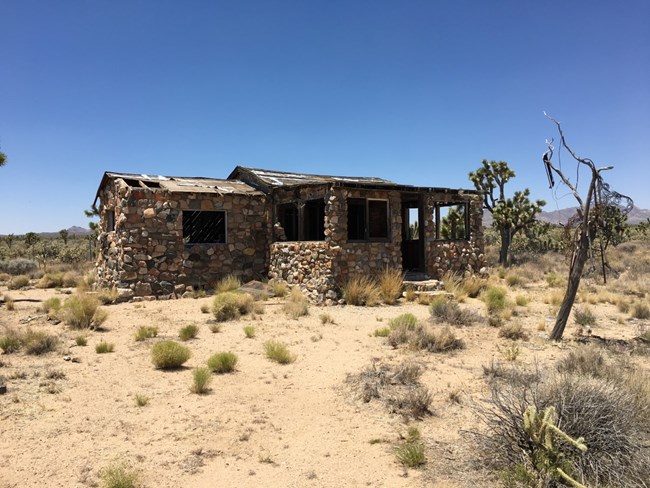
B. Michel, NPS The Mojave Desert has a vibrant history. Before contact with the Europeans changed their world, the Chemehuevi lived on prickly pear, mesquite and roasted agave blooms and hunted deer and bighorn sheep. They resided in the Kingston, New York, and Providence Mountains west to Soda Dry Lake and south to the Whipple Mountains. Mojave tribal peoples were concentrated along the Colorado River and the Mojave trail became their main trading route. When explorer Father Francis Garces traveled across the Mojave Desert, in 1776, he was met by members of the Mojave Tribe. Other intrepid explorers would follow Garces, including Jedediah Smith in 1826 and John Fremont in 1844. Concern abounded about tribal attacks on the mail carriers who traveled the Mojave Road. During the 1860s government outposts were established providing protection for the mail wagons. During this same era, gold fever struck California. The General Mining Law of 1872 permitted individuals to stake a claim on an area of land where a mineral deposit was discovered. Copper, iron, gold and silver mines rapidly became established in the Mojave. In 1883, on the eastern side of the Providence Mountains, silver was discovered in the Bonanza King Mine. In the 1940s the Kaiser Steel Company extracted more than two million tons of iron ore from the Vulcan Mine which was used in the construction of the Liberty ships during World War II. Ranchers quickly became established in Mojave as well. Mojave's history is as varied and colorful as the individuals who staked their claim in the desert. During the 1930s, Mary Beale hiked the Providence Mountains and identified several species of plants and wildflowers. Her friends, Jack and Ida Mitchell, built a road, trails and stairs where they led tours of limestone caverns. About 10 years later, Dr. Curtis Springer established a mineral springs resort, Zzyzx. From there, he would broadcast his syndicated radio show on how to achieve sound physical and spiritual health. Now, Zzyzx is home to California State University's Desert Studies Center. Kelso Depot, which once provided food, recreation and accommodations for Union Pacific Railroad employees is now the principal visitor center for Mojave National Preserve. Click here (PDF, 120.91 KB) to learn more about the atmosphere of Kelso Depot during its heyday. Although the last passenger train crossed the tracks in 1997, freight is still transported and reminds visitors of days past. For more information about the passenger trains that came through Kelso, go here (PDF, 151.19 KB) .
|
|
|
Last updated: May 8, 2021

